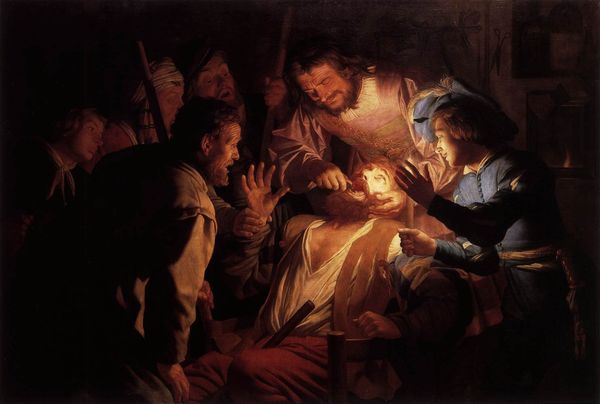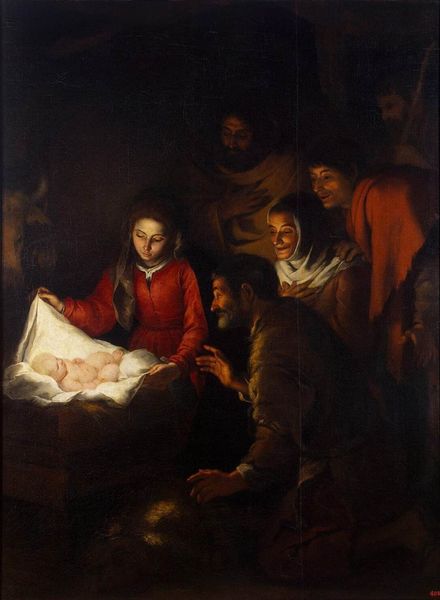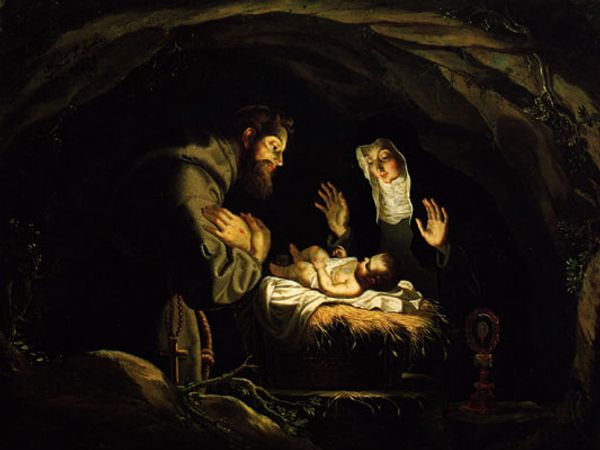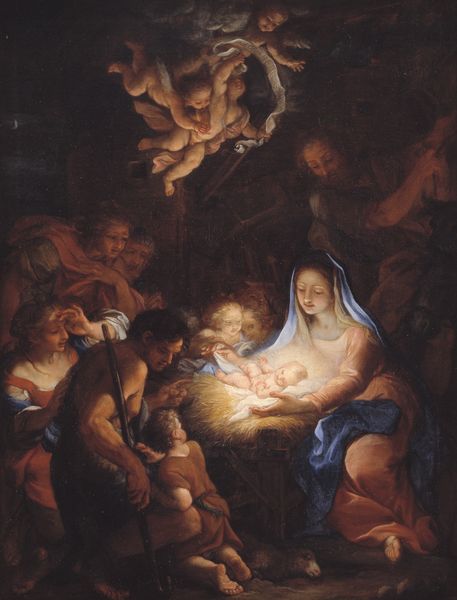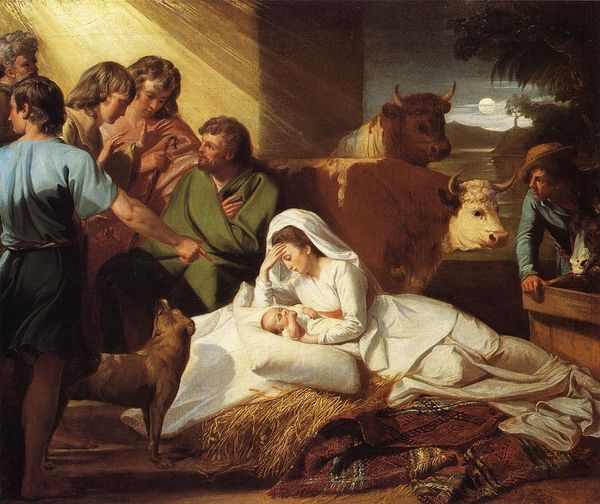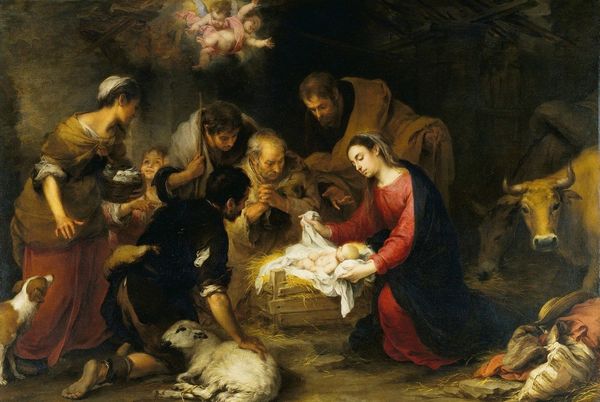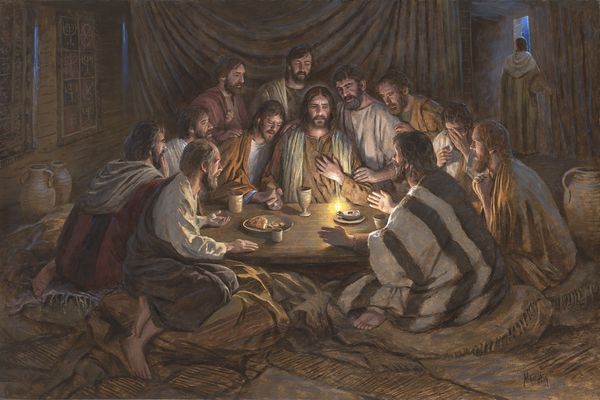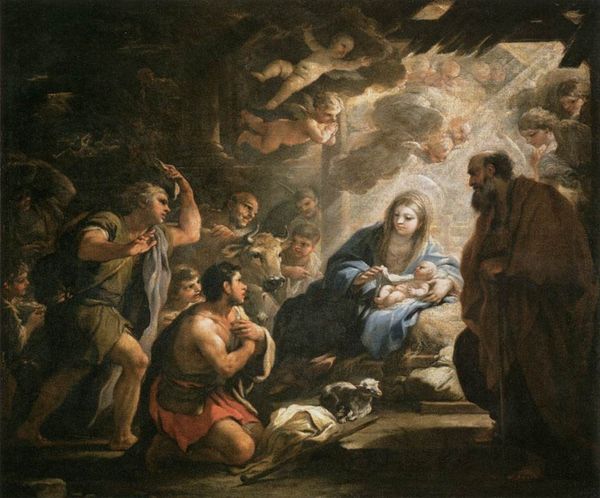
painting, oil-paint
#
narrative-art
#
baroque
#
painting
#
oil-paint
#
figuration
#
oil painting
#
chiaroscuro
#
genre-painting
#
history-painting
Copyright: Public domain
Editor: We’re looking at Gerard van Honthorst’s "Adoration of the Shepherds," painted in 1622, crafted using oil paints. I am immediately drawn to the dramatic contrast of light and shadow and the intimacy of the figures gathered around the baby Jesus. What stylistic elements stand out to you? Curator: The painting’s undeniable strength resides in its stark chiaroscuro, a hallmark of the Utrecht Caravaggisti, like Honthorst, during the Baroque era. Observe how the light source, seemingly emanating from the Christ child, sculpts the forms. Does this compositional strategy seem effective to you? Editor: Yes, it really pulls my focus. It makes everything revolve around the light source. What else can you tell me about its structure? Curator: Consider the organization of the figures within the pictorial space. The artist uses a pyramidal arrangement to structure the composition, lending stability and focus. Can you detect this organizing principle at play? Moreover, note the way Honthorst deploys varied textures – the rough straw juxtaposed against the smooth skin tones. Editor: Now that you point it out, the pyramid shape is clearly visible, it starts at the top right of the canvas down to the front with the baby, then rising again toward the figures on the left. Curator: Precisely. These details contribute to the work's overall visual and tactile richness. The rendering of fabrics too —observe the subtle shifts of tones across Mary’s blue mantle, and the different whites and yellows, which point at both divine light and physical substance. Editor: So it’s less about historical accuracy or narrative and more about the interplay of forms, light, and textures within the painting itself. That’s so interesting! Curator: Precisely. Formal analysis permits a deeper engagement with the artwork as a self-contained aesthetic experience.
Comments
No comments
Be the first to comment and join the conversation on the ultimate creative platform.
